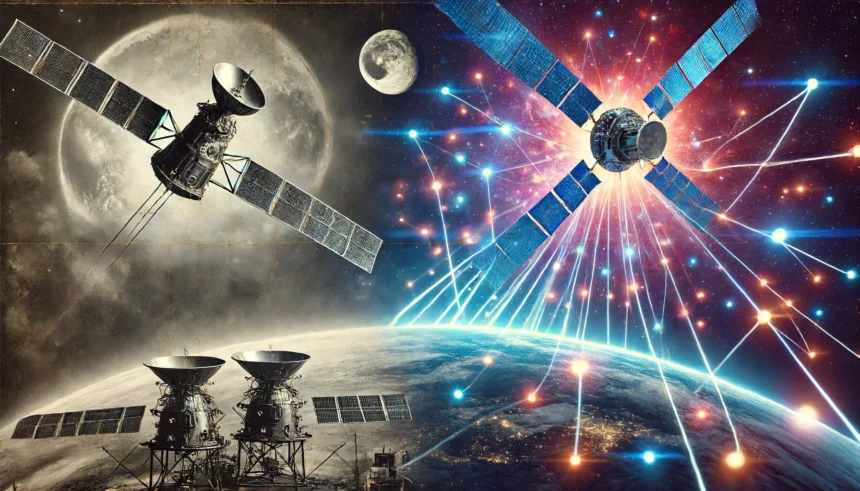From the historic 1957 launch of Sputnik by the Soviet Union to today’s advanced networks like Starlink, satellite technology has been pivotal in shaping global communication, navigation, and even our understanding of the Earth.
Early Developments in Satellite Technology
The Dawn of the Satellite Age
The journey began with Sputnik 1, the first satellite ever launched, which sent signals from space back to Earth, proving that space-based operations were possible. This milestone sparked the space race and led to rapid advancements in satellite technology. The United States quickly responded with its own satellite, Explorer 1, and soon after, NASA was founded to lead America’s space efforts.
Communication Breakthroughs
By 1960, the world saw TIROS-1, the first successful weather satellite, and Telstar 1, which enabled transatlantic TV broadcasts. These early satellites laid the groundwork for using space to improve data gathering and global communications.
Technological Advances from the 1970s to the 1990s
Satellite technology continued to evolve with the introduction of geostationary satellites in the 1970s, which rotate in sync with the Earth, providing consistent data from a fixed position. This period also saw the launch of Landsat 1, the first satellite to monitor Earth’s environment, revolutionizing fields like agriculture and urban planning.
The 1980s and 1990s brought the development of the Global Positioning System (GPS), a network of satellites providing precise location data crucial for everything from navigation to military operations.
Modern Satellite Networks and High-Speed Internet
The Era of Global Connectivity
In the 21st century, satellites have become integral to global communications, driven by the demand for high-speed internet access. One of the most significant modern projects is SpaceX’s Starlink, which aims to build a network of low Earth orbit (LEO) satellites to provide fast, reliable internet worldwide. This initiative is especially crucial for remote and underserved areas, promising to bridge the digital divide.
Impact and Future of Satellite Technology
Transforming Daily Life and Beyond
Satellites have profoundly impacted daily life; they support the apps that guide us, help monitor weather for safe travel, and enable instant global communications. The construction industry, emergency services, and even arts and culture have benefitted from satellite technology.
Looking ahead, the future of satellites looks promising with advancements in AI, propulsion technology, and quantum communications. Satellites will continue to play a crucial role in space exploration and may bring about even more revolutionary changes in how we connect and communicate across the globe.
The Path Forward in Satellite Technology
As we continue to push the boundaries of what’s possible in space, satellite technology remains at the heart of global connectivity and exploration. With projects like Starlink leading the way, the potential for even more transformative impacts on society is immense.
















